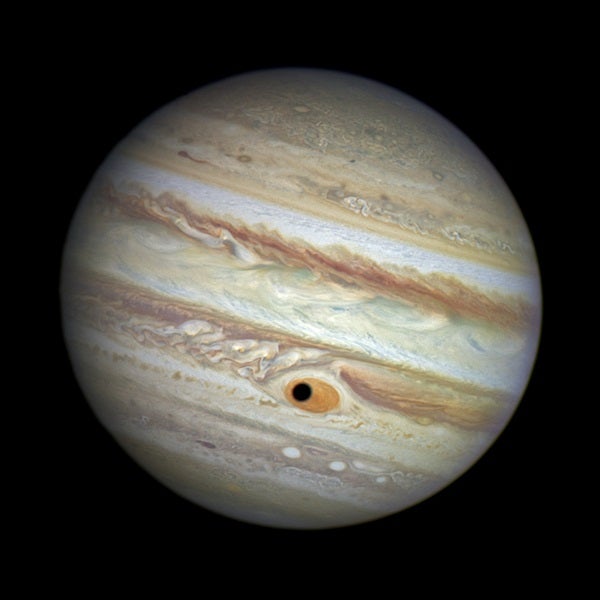With the overbearing glare of the Moon now out of the way, Jupiter stands out even better against the background stars of the constellation Ophiuchus the Serpent-bearer.
If you target the planet through a telescope, you’ll easily see two dark cloud belts that run parallel to each other across the gas giant’s 36″-diameter disk. Small instruments also reveal Jupiter’s four bright Galilean moons.
On the morning of Thursday, February 28, viewers across western North America get a bonus because the giant world appears to have a “black eye.” It is actually the dark shadow of the moon Europa, which crosses Jupiter’s northern hemisphere from 3:11 to 5:32 a.m. PST.
The shadows of the Galilean moons regularly cross Jupiter’s disk. For instance, Jupiter’s innermost moon, Io, creates an eclipse on Jupiter about once every two days. On the other hand, Callisto, Jupiter’s outermost Galilean moon, gives Jupiter a black eye about once every 17 days.
For more quick and easy observing tips, make sure to check out The sky this week for February 22 to March 3.










